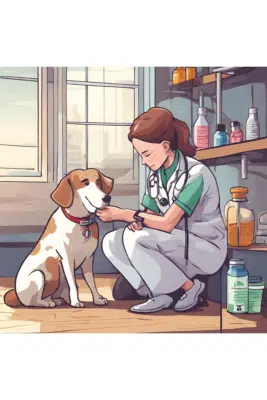In the midst of the global COVID-19 pandemic, a remarkable trend emerged that brought solace, comfort, and companionship to millions of households worldwide – the rise of pandemic pets.
As the world grappled with unprecedented challenges and lockdowns, people turned to the unconditional love and affection of animals. In this article, we explore the heartwarming story of the surge in pet adoptions and the profound impact these pandemic pets have had on our lives.
The Pandemic Pet Boom
The COVID-19 pandemic changed the way we live, work, and interact with the world. With lockdowns, social distancing measures, and remote work becoming the norm, people suddenly found themselves spending more time at home than ever before. This shift in lifestyle prompted many to reconsider their living arrangements and prioritize companionship in the form of pets.
A Surge in Pet Adoptions
According to the American Society for the Prevention of Cruelty to Animals (ASPCA), the demand for pets, especially dogs and cats, surged during the early days of the pandemic. In the United Kingdom, the Pet Food Manufacturers’ Association (PFMA) reported a similar trend, with nearly 3.2 million households acquiring new pets. The desire for a furry friend to share the lockdown with led to a surge in pet adoptions from animal shelters and rescue organizations. Many of these pets found loving homes, providing a much-needed boost to animal welfare efforts. However, this unprecedented demand also raised concerns about responsible pet ownership and the potential for post-pandemic challenges.
Source: ASPCA
The Mental Health Connection
The emotional toll of the pandemic was significant, with people experiencing heightened levels of stress, anxiety, and loneliness. Pets, with their ability to offer companionship and emotional support, emerged as a source of comfort for countless individuals and families. Studies conducted during the pandemic highlighted the positive impact of pet ownership on mental health. For instance, research published in the journal “PLOS ONE” found that pet owners reported lower levels of loneliness and depression during lockdowns. The bond formed between humans and their furry companions provided a buffer against the emotional strains of isolation.
Source: PLOS ONE
Filling the Void
With restrictions on social gatherings and travel, people missed the social connections they once took for granted. In response, pets stepped in to fill the void. The companionship, routines, and affection provided by pandemic pets helped alleviate the sense of isolation that many were experiencing. Whether it was a dog’s joyful greeting at the door or a cat’s comforting purr, these animals brought a sense of normalcy and emotional support to households. They became our steadfast allies in navigating the uncertainties of the pandemic.

Pandemic Pets: Challenges and Responsibilities
While the surge in pet adoptions during the pandemic brought immeasurable joy and comfort to many, it also raised important questions and challenges that responsible pet owners and organizations had to address.
Responsible Ownership
The rapid adoption of pets during the pandemic led to concerns about responsible pet ownership. Many first-time pet owners needed guidance on providing proper care, training, and socialization for their furry companions. Organizations like the RSPCA in the UK and the ASPCA in the US offered resources and support to help new pet owners navigate the responsibilities of pet ownership.
Post-Pandemic Planning
As restrictions began to ease and life returned to a semblance of normalcy, there was growing concern about what would happen to these pandemic pets. Would they continue to receive the same level of attention and care once their owners returned to their pre-pandemic routines? Animal welfare organizations stressed the importance of planning for the long-term needs of pets. This included addressing issues like separation anxiety, ensuring proper exercise and socialization, and making arrangements for pet care when owners were no longer working from home.
Impact on Animal Shelters
While many animals found loving homes during the pandemic, shelters faced challenges of their own. The surge in demand initially led to a decrease in shelter populations, but as the pandemic continued, some shelters saw an increase in surrenders as owners faced financial hardships or realized they couldn’t meet the demands of pet ownership. Animal rescue organizations continued their essential work, emphasizing the importance of adopting from shelters and promoting spaying and neutering to prevent future overpopulation.
Conclusion: The Legacy of Pandemic Pets
The rise of pandemic pets is a heartwarming testament to the resilience of the human spirit and the enduring bond between humans and animals. These pets provided comfort, companionship, and a source of joy during one of the most challenging periods in modern history.
As we move forward, it is essential for pet owners to remain committed to the well-being of their furry friends. Responsible ownership, proper care, and post-pandemic planning are crucial to ensure that the love and bond formed during the pandemic continue to flourish.
Pandemic pets have not only brightened our lives but have also highlighted the profound impact that animals can have on our mental and emotional well-being. They remind us of the enduring power of the human-animal connection and the comfort that can be found in the gentle wag of a tail or the soothing purr of a cat.
As we reflect on the rise of pandemic pets, let us celebrate the joy they have brought into our lives and recommit to providing them with the love and care they deserve, pandemic or not.




